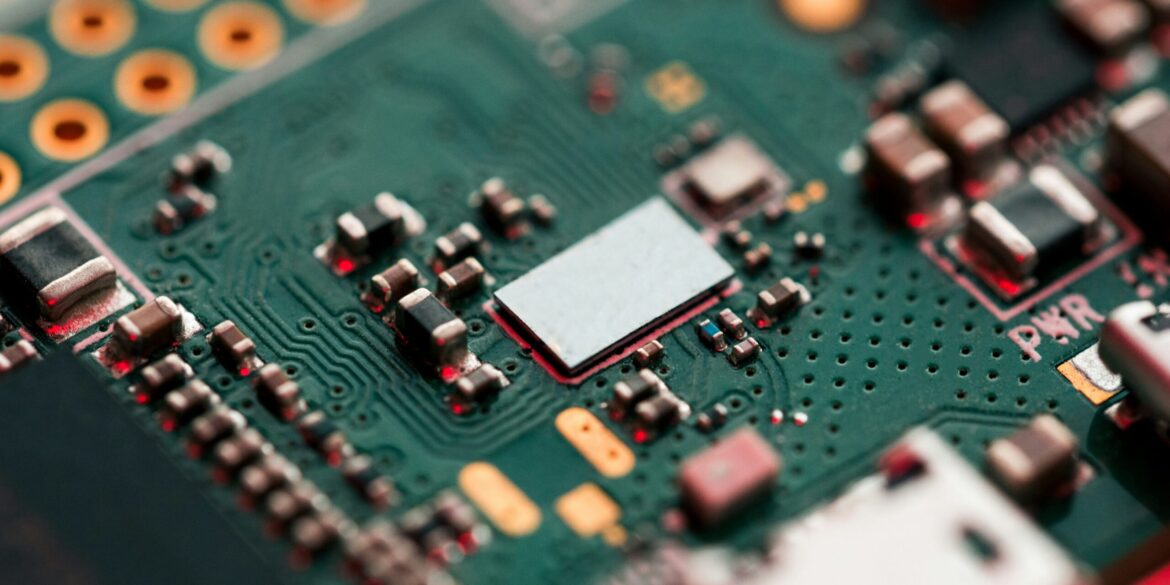In a move set to reshape the landscape of American manufacturing, Micron Technology announced on June 13, 2025, that it would invest a staggering $200 billion into semiconductor manufacturing in the United States. This is one of the largest private-sector investments in U.S. industrial history and promises to significantly bolster the U.S. semiconductor supply chain.
The Need for Domestic Semiconductor Manufacturing
Semiconductors, the tiny chips that power everything from smartphones to electric cars, have become an essential part of modern life. Over the last few decades, the U.S. semiconductor industry has been at the forefront of innovation. However, the global semiconductor supply chain has faced significant challenges, particularly in the wake of the COVID-19 pandemic. Global shortages in chips have disrupted industries worldwide, causing production delays and creating a heightened awareness of the risks involved in relying too heavily on foreign manufacturing, especially from countries like Taiwan and South Korea.
Micron’s $200 billion investment is a direct response to these challenges, aiming to secure U.S. manufacturing capabilities for critical technologies. The company’s decision to build new fabrication facilities and expand existing ones across various U.S. states is expected to increase production capacity and address the semiconductor supply gap.
“Semiconductors are essential to nearly every aspect of modern life, and they are increasingly at the core of future innovations. Our investment in domestic manufacturing not only ensures that the U.S. remains a leader in semiconductor technology, but also strengthens the resilience of our national supply chain,” said Sanjay Mehrotra, CEO of Micron Technology, during the announcement.
Economic Impact and Job Creation
Micron’s massive investment comes with a promise to create more than 90,000 jobs across various sectors, including engineering, construction, and manufacturing. According to economic analysts, this project could potentially transform regions by revitalizing local economies, offering new opportunities in both high-skill jobs like semiconductor design and low-skill labor for factory construction.
The project will take place over the course of several years, with phased development across multiple states, including Texas, Arizona, and Ohio. These states have been chosen for their strong infrastructure, skilled workforce, and incentives provided by local governments eager to attract high-tech manufacturing.
The semiconductor industry in the U.S. has historically been concentrated in states like California, but the new investments will spread out across the country, especially to areas with growing tech industries and robust manufacturing capabilities. “The development of these new sites will not only boost production but will also create a highly skilled workforce that will be critical for the future growth of the industry,” said Patricia Goss, a regional economic development expert.
Implications for U.S. Global Competitiveness
This bold move is part of a larger trend of reshoring that has been gaining momentum in the U.S. in recent years, particularly in high-tech industries. The decision by Micron follows a similar move by Intel, which announced a $100 billion investment in semiconductor manufacturing in Ohio in late 2024.
The U.S. government has made moves to further strengthen the domestic semiconductor industry. President Biden’s administration has prioritized semiconductor manufacturing as part of the bipartisan CHIPS Act, which allocated $52 billion in subsidies to encourage domestic production. This legislation, signed into law in 2022, is designed to bolster U.S. competitiveness with China and other countries that are investing heavily in their own semiconductor industries.
The Micron investment is likely to spur further growth in the U.S. semiconductor sector, and it may also influence other companies to follow suit. With a growing demand for chips driven by emerging technologies such as artificial intelligence (AI), 5G, and electric vehicles, the need for domestic production capacity has never been more urgent.
National Security and Geopolitical Considerations
One of the driving factors behind this investment is the increasing recognition of semiconductors’ strategic importance in national security. Micron’s announcement comes amid ongoing tensions between the U.S. and China, particularly regarding issues such as trade, intellectual property, and supply chain security.
Semiconductors are used in many critical military technologies, and the ability to produce them domestically reduces the risks posed by geopolitical conflicts or disruptions in foreign supply chains. By investing in domestic manufacturing, the U.S. can better safeguard its security interests and ensure that it does not depend on foreign adversaries for critical technology components.
“This is not just an economic issue; it is a national security issue,” said Senator Mark Warner of Virginia, who has been a vocal advocate for strengthening U.S. tech capabilities. “Micron’s investment represents a key step in securing our technological future, and it sends a clear message to the world that the U.S. is committed to maintaining its leadership in high-tech manufacturing.”
Environmental and Sustainability Efforts
While the U.S. semiconductor industry has the potential to create thousands of jobs, it also faces challenges related to environmental sustainability. Semiconductor manufacturing is known for its high energy consumption and the use of materials that can be harmful to the environment if not properly managed. In response, Micron has committed to incorporating sustainable practices into its new manufacturing facilities.
As part of its investment, Micron plans to use renewable energy sources to power its new plants and will implement water and energy recycling systems to minimize its environmental footprint. Additionally, Micron is working with local communities and governments to ensure that the new factories meet stringent environmental standards and provide long-term, sustainable benefits.
“We are committed to creating a cleaner and greener semiconductor manufacturing process. Our goal is to not only lead in innovation but also set an example in sustainability,” said Mehrotra.
Conclusion: Micron’s Long-Term Impact on U.S. Manufacturing
The $200 billion investment by Micron Technology is a game-changer for the U.S. semiconductor industry and the broader tech sector. It represents a critical step toward securing a more resilient, self-sufficient U.S. supply chain and ensuring that America remains competitive on the global stage.
In the coming years, the effects of Micron’s investment will be felt across the country—creating jobs, boosting local economies, and positioning the U.S. as a leader in semiconductor technology for decades to come.


